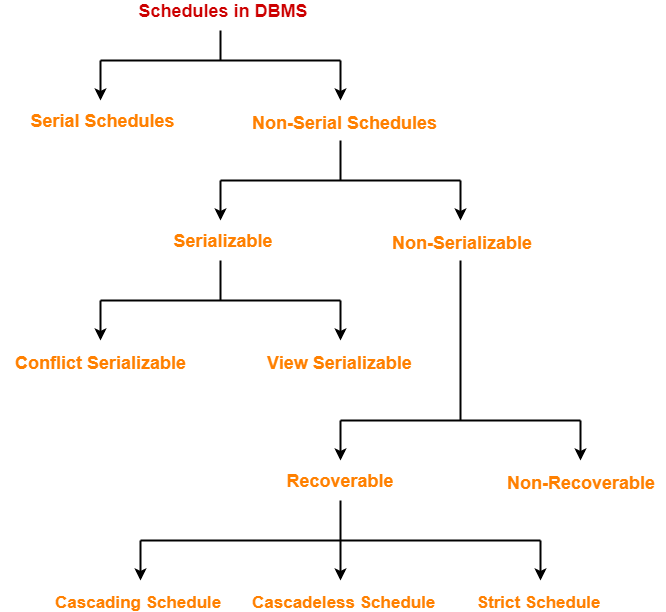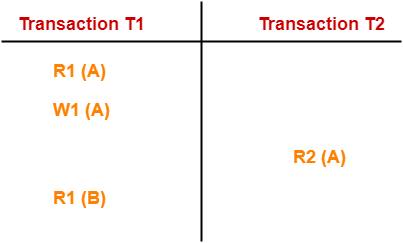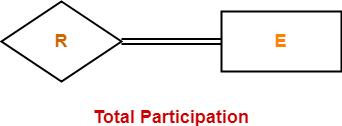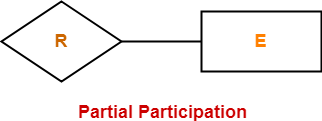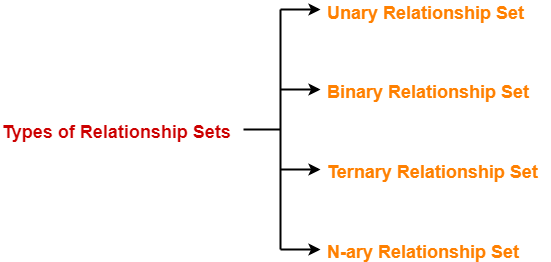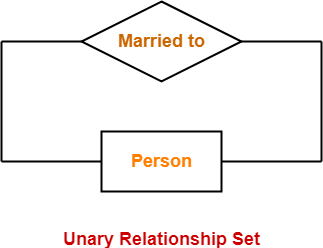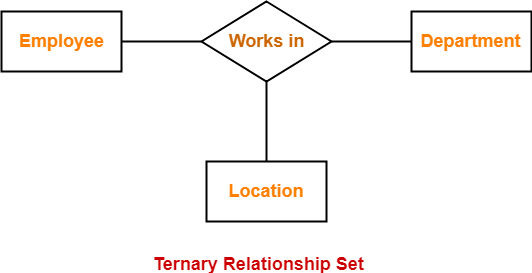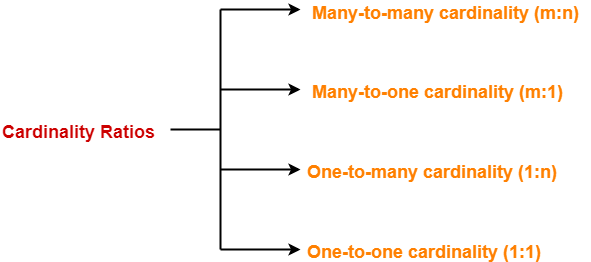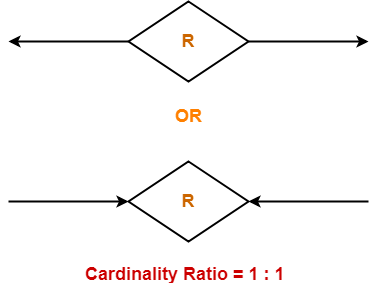Conflict Serializability-
Before you go through this article, make sure that you have gone through the previous article on Conflict Serializability.
We have discussed-
- The concept of serializability helps to identify the correct non-serial schedules that will maintain the consistency of the database.
- There are two types of serializability-

In this article, we will discuss practice problems based on conflict serializability.
PRACTICE PROBLEMS BASED ON CONFLICT SERIALIZABILITY-
Problem-01:
Check whether the given schedule S is conflict serializable or not-
S : R1(A) , R2(A) , R1(B) , R2(B) , R3(B) , W1(A) , W2(B)
Solution-
Step-01:
List all the conflicting operations and determine the dependency between the transactions-
- R2(A) , W1(A) (T2 → T1)
- R1(B) , W2(B) (T1 → T2)
- R3(B) , W2(B) (T3 → T2)
Step-02:
Draw the precedence graph-
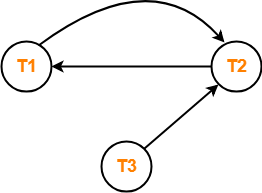
- Clearly, there exists a cycle in the precedence graph.
- Therefore, the given schedule S is not conflict serializable.
Problem-02:
Check whether the given schedule S is conflict serializable and recoverable or not-
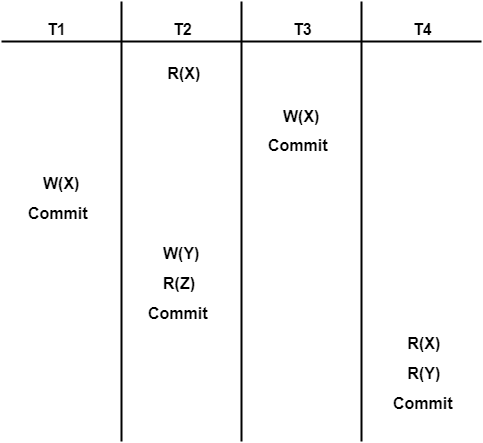
Solution-
Checking Whether S is Conflict Serializable Or Not-
Step-01:
List all the conflicting operations and determine the dependency between the transactions-
- R2(X) , W3(X) (T2 → T3)
- R2(X) , W1(X) (T2 → T1)
- W3(X) , W1(X) (T3 → T1)
- W3(X) , R4(X) (T3 → T4)
- W1(X) , R4(X) (T1 → T4)
- W2(Y) , R4(Y) (T2 → T4)
Step-02:
Draw the precedence graph-
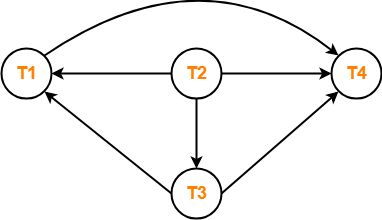
- Clearly, there exists no cycle in the precedence graph.
- Therefore, the given schedule S is conflict serializable.
Checking Whether S is Recoverable Or Not-
- Conflict serializable schedules are always recoverable.
- Therefore, the given schedule S is recoverable.
Alternatively,
- There exists no dirty read operation.
- This is because all the transactions which update the values commits immediately.
- Therefore, the given schedule S is recoverable.
- Also, S is a Cascadeless Schedule.
Problem-03:
Check whether the given schedule S is conflict serializable or not. If yes, then determine all the possible serialized schedules-
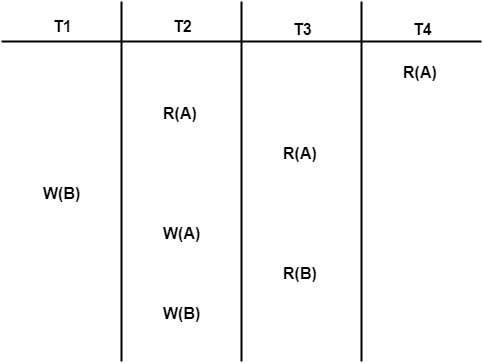
Solution-
Checking Whether S is Conflict Serializable Or Not-
Step-01:
List all the conflicting operations and determine the dependency between the transactions-
- R4(A) , W2(A) (T4 → T2)
- R3(A) , W2(A) (T3 → T2)
- W1(B) , R3(B) (T1 → T3)
- W1(B) , W2(B) (T1 → T2)
- R3(B) , W2(B) (T3 → T2)
Step-02:
Draw the precedence graph-
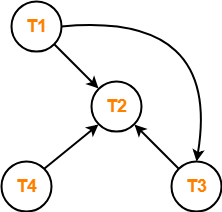
- Clearly, there exists no cycle in the precedence graph.
- Therefore, the given schedule S is conflict serializable.
Finding the Serialized Schedules-
- All the possible topological orderings of the above precedence graph will be the possible serialized schedules.
- The topological orderings can be found by performing the Topological Sort of the above precedence graph.
After performing the topological sort, the possible serialized schedules are-
- T1 → T3 → T4 → T2
- T1 → T4 → T3 → T2
- T4 → T1 → T3 → T2
Problem-04:
Determine all the possible serialized schedules for the given schedule-
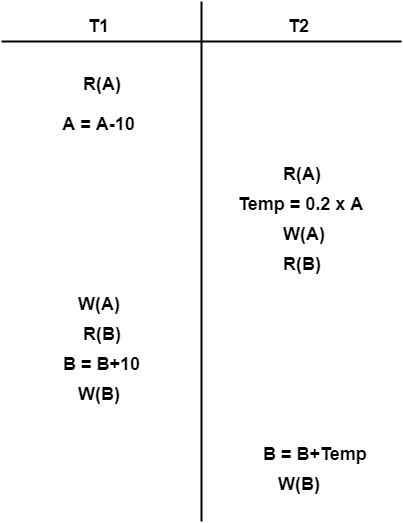
Solution-
The given schedule S can be rewritten as-
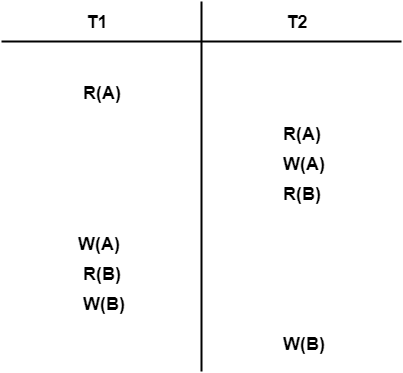
This is because we are only concerned about the read and write operations taking place on the database.
Checking Whether S is Conflict Serializable Or Not-
Step-01:
List all the conflicting operations and determine the dependency between the transactions-
- R1(A) , W2(A) (T1 → T2)
- R2(A) , W1(A) (T2 → T1)
- W2(A) , W1(A) (T2 → T1)
- R2(B) , W1(B) (T2 → T1)
- R1(B) , W2(B) (T1 → T2)
- W1(B) , W2(B) (T1 → T2)
Step-02:
Draw the precedence graph-
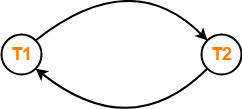
- Clearly, there exists a cycle in the precedence graph.
- Therefore, the given schedule S is not conflict serializable.
- Thus, Number of possible serialized schedules = 0.
Next Article- View Serializability in DBMS
Get more notes and other study material of Database Management System (DBMS).
Watch video lectures by visiting our YouTube channel LearnVidFun.
